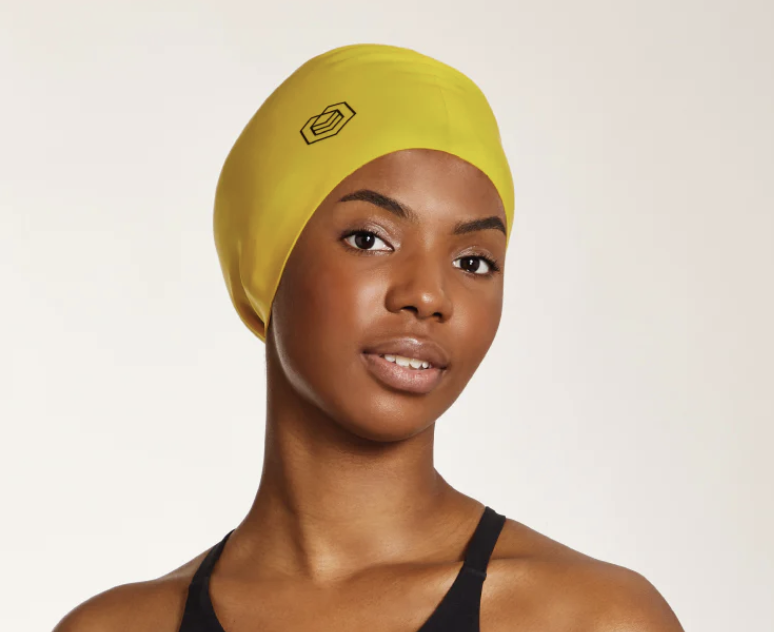
Source: Soul Cap / Soul Cap
It may not seem like a big deal, unless you have locs, braids or an Afro. That was the dilemma presented to aspiring competitive swimmers who couldn’t use the Soul Cap, which was created for that very purpose.
The Soul Cap is an elongated swim cap that allows those with “ethnic” hairstyles and natural hair to swim without getting their hair wet. That also keeps it from getting damaged and from inhibiting their ability to swim without worrying about long, thick hair being in their face. But when the U.K.-based creators of the Soul Cap tried to get it approved for the Tokyo Olympics, FINA, the sport’s governing body now known as World Aquatics, said no.
Admittedly, there were few athletes it applied to as swimming has typically been a lily-white sport. While there are reasons for that – the expense of training, the accessibility of Olympic-sized pools and many Black young people preferring to participate in other sports – hair was certainly a deterrent.
But now, the Soul Cap will be allowed at major swim meets. The 2023 World Championships going on now in Fukuoka, Japan was one of the first meets it was legal. After a backlash at their decision to ban the caps in Tokyo, they changed their minds last October, adding the cap to “approved equipment” for athletes.
Realistically, competitive swimmers may want to keep their hair short and use the tighter, smaller caps, given that their goal is to shave precious seconds off their times to win races.
“One of the beautiful things about the Soul Cap model is the inclusivity for people with longer hair,” four-time Olympic medalist (with two gold) Cullen Jones told AP. “Men, women, people with longer hair can enjoy the water. I know that for a lot of the companies, many of the caps are made for hydrodynamics. The Soul Cap is more about being inclusive.”
Michael Phelps’ longtime coach, Bob Bowman, says that the cap won’t necessarily benefit elite swimmers or those who aspire to be one. But he can see it encouraging more people to swim in the first place, in the same way that so-called “jammer” swimsuits which look like biker tights, likely brought more boys to the pool.
“I think that encouraged a lot of boys to swim since they didn’t have to wear a small Speedo,” he said. “It’s the same kind of thing as that. It will encourage some people who might not have swum to try it.”
And in the recreational world, the cap may break the barriers that keep Black people from learning how to swim. That has led to the statistics that show Black children drown at three times the rate of whites because neither they nor their parents can swim.
“I teach water safety to nonswimmers and beginners,” said Seren Jones, a U.K. swim instructor and co-founder of the Black Swimming Association. “It’s absolutely incredible to see so many, really the majority of women across London, using the Soul Cap. I’m talking about women from the 20s to their 70s. It’s phenomenal. They feel empowered to learn and be safe in the water without worrying about their hair, which previously was a major issue.”
















